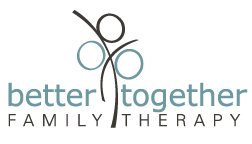Burnout and Pandemic Fatigue: How to Work Through the Stress
“ “Stress is not bad for you; being stuck is bad for you””
Things seem better, but we’re still feeling stressed. We’ve been doing everything to keep up this past year and it’s burned us out.
Below are some lessons gleaned by a Licensed Marriage and Family Therapist in Maryland.
We hopefully only have a few more months till we can take the next step in this pandemic, and if you find yourself at the end of your rope see below for my dive into burnout and what to do about it from Emily and Amelia Nagoski’s book Burnout: The Secret to Unlocking the Stress Cycle.
What is burnout? As defined by Herbert Freundenberge in 1975 burnout has 3 components:
Emotional exhaustion- fatigue that comes from caring for too much for too long
Depersonalization- depletion of empathy, caring, and compassion
Decrease sense of accomplishment— sense of futility that feels unconquerable: feeling that nothing you do makes a difference
“It’s the emotional exhaustion for me” as the meme saying goes. It’s the most likely thing to impact us negatively. That’s for our health, relationships, and work—especially for women. This happens when we get stuck in an emotion—we haven’t gone all the way through the tunnel.
We have to deal with our stress not just our stressors. Family counselors have seen this a lot lately.
Stressors activate the stress response in our body. Anything from a sight, sound, smell, memory. It could be something external like cultural expectations, discrimination, work, money, family, or time. Or even more internal things like self-criticism, thinking about the Future, identity.
Internal or External Threats. Our body treats them the same.
All of these things can be perceived by our body as a big, scary threat. As in Um, Hi Mr. Tiger, Please don’t eat me.
Stress is the psychological and neurological reaction when our body encounters this threat. Our bodies activate a stress response that sets off hormonal and neurological activity that changes our entire body’s physiology in order to help us survive.
What do we do? We want to either run (flight), want to get angry and give them a piece of our minds (fight), or the less talked about option shutting down (freezing). But given our social niceties these days we usually can’t do those things.
And this happens day after day- especially with COVID—phew we escaped getting the virus again- or ok people recovered from it hallelujah! This is a chronic stressor and gives us chronic stress—on top of everything else.
What happens when we’ve dealt with the stressor, but not the stress? E.g. when the kids have stopped crying after a massive meltdown or the jerk at work has calmed down. “You’re body is soaked in stress juice just waiting for some cue that you are now safe from the potential threat and can relax” as Emily and Amelia Nagoski say.
We have to complete the stress cycle. Ugh, but how do I do that?
The most efficient way is physical activity. Running. Swimming. Dancing around the living room. Jumping up and down with your kid. Sweating it out to Beyonce or in a workout class.
As long as you are doing anything that gets your body breathing deeply for 20-60 mins. And for most days-yes I said it. We experience stress most days so we need to complete the cycle most days.
Other ways to complete the stress cycle?
Breathing: deep slow breaths (such as in this video).
Positive Social Interaction: this casual, friendly interaction is the first sign the world is safe- we haven’t been able to do this much. But even just complimenting the cashiers smile or saying “have a nice day” helps reassure your brain.
Laughter:deep belly laughs.
Affection: a 6 second kiss with your partner, or a 20 second hug with someone you love and trust— This can also go for those of us who are living alone-petting a cat, dog, or any animal you love.
A good cry: Yup the “ugly cry” Oprah talks about. The one where you need tissues.
Creative Expression: painting, music, theatre or a backyard play, any kind of storytelling helps us move through the big emotions.
These can teach your body it’s safe. That you escaped that darn bear.
How do I know I’ve completed the cycle?
It might be a shift in mood, tension, or physical tension. Find whatever works for you. It might be different on different days or during different times. The important thing is you need to build completing the cycle into each day.
“Wellness is not a state of being, but a state of action.”
If you’d like more individualized help with burnout or completing your stress cycle. Contact us for a free 15 min consult.



